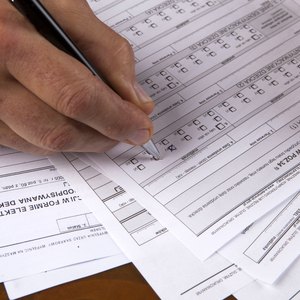
That W-4 handed over by your employer when you start a job affects how much federal and state income taxes are withheld from your paycheck. The form requires some simple calculations, and comes with instructions to walk you through the math. Take care with your W-4, as an error at this step can come back to haunt you at tax time.
Tips
You should claim as many exemptions as you need to ensure that you are capable of supporting yourself and any dependents you may have with your regular paycheck. However, any exemptions you claim at this point in time may result in a smaller tax refund during filing season.
Understanding Withholdings and Allowances
The W-4 is a routine tax form you need to complete when you start a new job. On it, you give your employer instructions on how much income tax to withhold from each paycheck. The IRS uses a system of allowances for this purpose. Each allowance you claim shelters a portion of your income from withholding. You can claim no allowances, or you can claim any number up to the maximum, which is 10.
Utilizing The Worksheet
Allowances roughly correspond to the exemptions you claim on your annual tax return. As of tax year 2017, each allowance shelters $4,050 of your annual income from the employer's withholding calculation. The IRS provides a Personal Allowances Worksheet at the top of the W-4 form to make the calculation. According to this worksheet, you should claim one allowance for yourself, as long as nobody else can claim you as a dependent. You add another allowance if you are single and have only one job, or if you are married and your spouse doesn't work.
Researching Additional Allowances
The worksheet suggests you add another allowance for your spouse, and one for each of your dependents. Single allowances are also advised if you are filing as a head of household, or if you have $2,000 or more of child or dependent care expenses. An additional allowance covers each dependent for which you can claim the child tax credit. The total number of allowances goes on Line H of the worksheet. Someone who is married with two children who are both eligible for the child tax credit, but whose spouse does not work, would claim seven allowances: one for himself, one for the "married, spouse not working" status, one for the spouse, two for the dependents, and two for the child tax credits.
Making Necessary Adjustments
You are free to adjust the allowances at any time during the year. You also may request that the IRS withhold additional tax. If you earn self-employment income, for example, you might want to ask for more withholding to avoid a tax bill when your return is due. In addition, if you plan to have no taxes due, you can claim exemption from withholding altogether. Payroll taxes for Social Security and Medicare will still come out of your check, and if you owe taxes you may be penalized for under-withholding.
References
Writer Bio
Founder/president of the innovative reference publisher The Archive LLC, Tom Streissguth has been a self-employed business owner, independent bookseller and freelance author in the school/library market. Holding a bachelor's degree from Yale, Streissguth has published more than 100 works of history, biography, current affairs and geography for young readers.

